Where History and Nature Collide: A Land of Legends and Natural Beauty
Some places feel frozen in time, their landscapes shaped by ambition, disaster, and the quiet power of nature. Ha Ha Tonka State Park is one such place—a collision of history and raw beauty, where towering castle ruins, rugged karst formations, and crystal-clear springs whisper the secrets of Missouri’s past.
This is a land sculpted by both human vision and nature’s relentless force. Here, stone walls once stood as symbols of grandeur, but now crumble beneath the weight of history. Beneath them, underground rivers carve unseen paths, shaping the very foundation of the park.
But Ha Ha Tonka is more than just scenery—it’s a destination steeped in adventure, offering everything from hiking and kayaking to historic exploration and wildlife encounters. Whether you come for the mystery of the castle, the sheer wonder of the land, or the thrill of discovery, this park delivers an experience unlike any other in the Midwest.
A Castle, A Dream, and the Land That Time Shaped: A Vision Too Bold for Its Time
Ha Ha Tonka’s castle was born from a dream too grand for its time—an American vision inspired by the European past.
At the turn of the 20th century, businessman Robert McClure Snyder Sr. looked over the Niangua River Valley and saw potential. He purchased 5,000 acres, determined to build a fortress-like estate that would rival the grandest homes in the Midwest. His vision was bold, elaborate, and steeped in ambition, featuring towering stone walls, elegant rooms, and panoramic views.
But fate intervened. In 1906, Snyder was killed in one of Missouri’s earliest automobile accidents, leaving his castle unfinished. His sons took up the project, completing the structure in the 1920s, but mounting financial struggles made upkeep impossible.
By the 1930s, the estate was transformed into a hotel, attracting guests eager to experience its majestic views. Then, in 1942, disaster struck again—a fire tore through the building, leaving behind the skeletal stone ruins that still stand today.
Now, as you walk the Castle Trail, the remains of Snyder’s lost dream loom above, a testament to both human ambition and the unpredictable forces of fate.



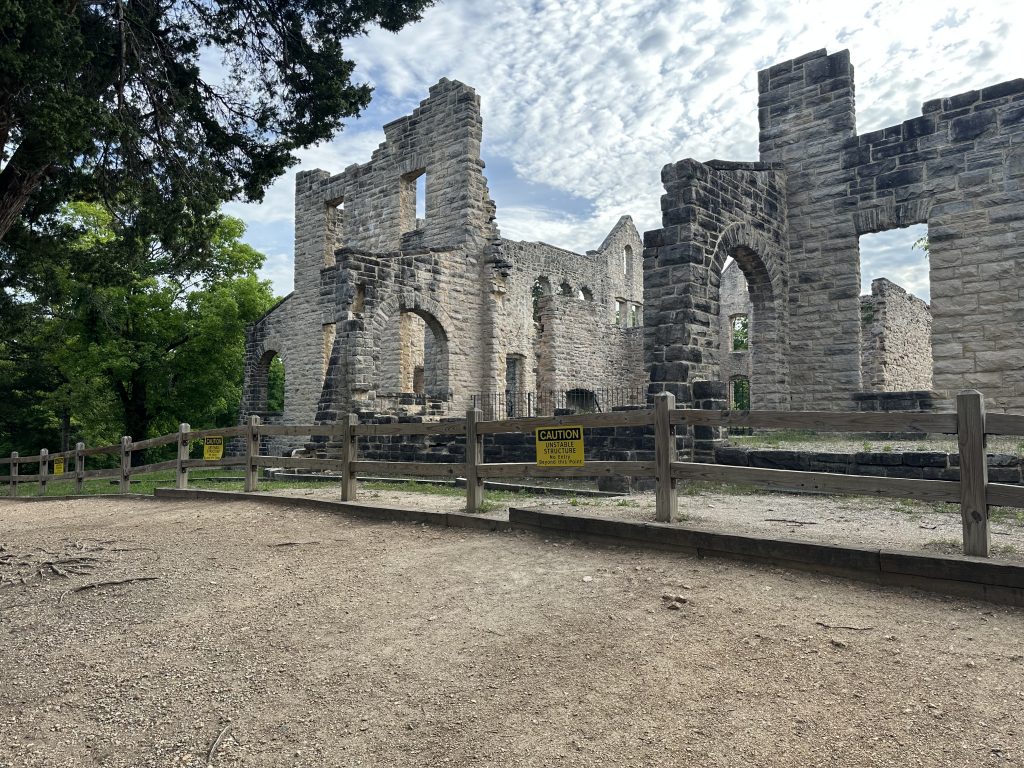
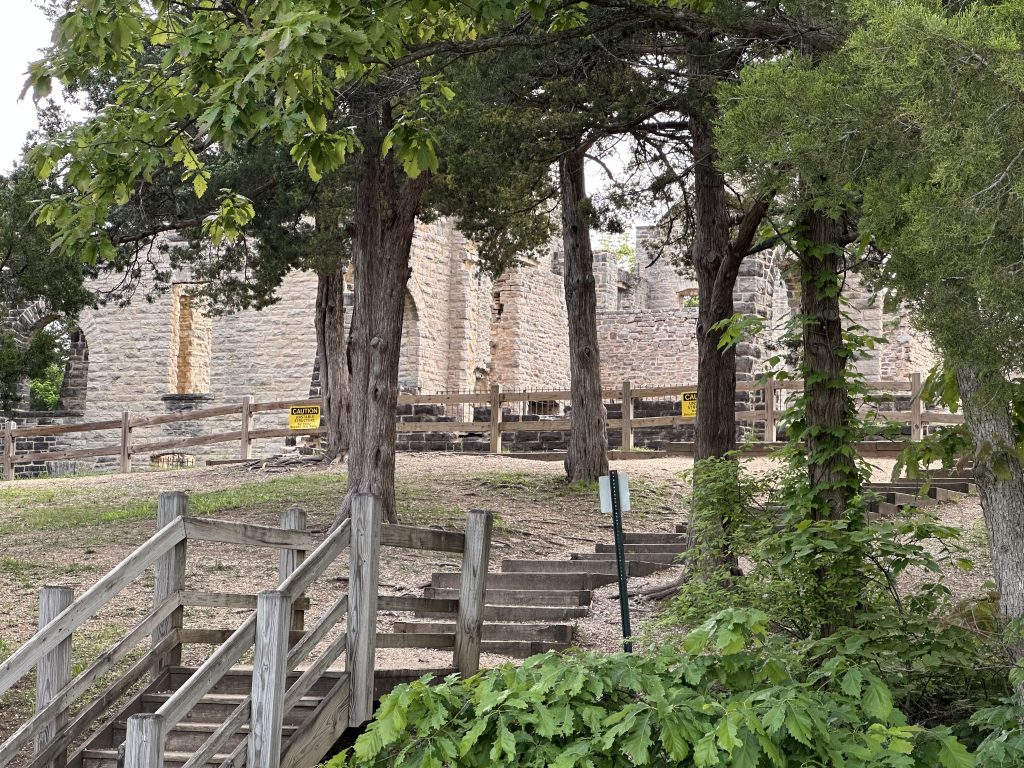
A Land Carved by Time & Water: Ha Ha Tonka’s Ever-Changing Landscape
Long before Snyder laid the first stone, nature was already crafting Ha Ha Tonka through erosion, collapse, and quiet transformation.
The park sits atop a karst landscape, a region where water slowly dissolves limestone, creating caves, sinkholes, natural bridges, and underground waterways. One of the most stunning features, the Natural Bridge, stretches 60 feet wide and towers 100 feet high, a lasting remnant of a cavern long since collapsed. Nearby, the Colosseum Sinkhole plunges deep into the earth, revealing boulders from a once-hidden underground world.
Water is the true architect of Ha Ha Tonka. Its springs, cliffs, and caverns are proof that landscapes are never truly finished, forever shifting beneath the forces of time.


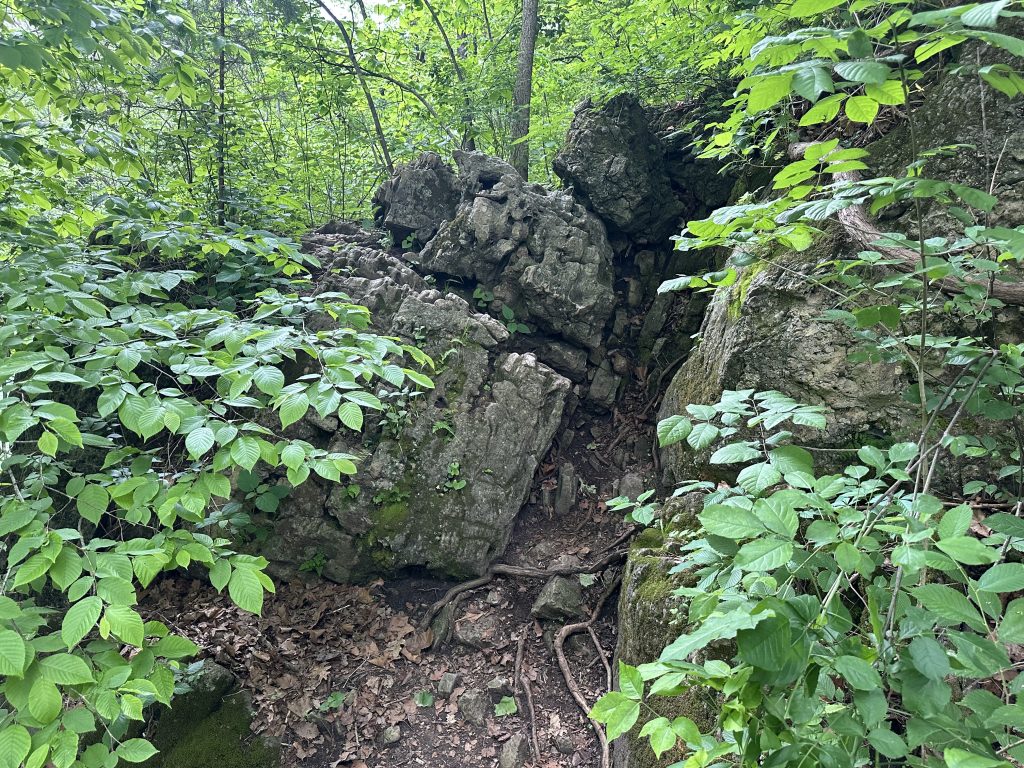
History and Mystery: Legends That Linger in the Ruins
Ha Ha Tonka is more than ruins and rock formations—it is a place of stories, legends, and unanswered questions.
Some say Snyder’s castle was cursed, doomed from the beginning. Others claim outlaws once roamed these caves, using the rugged terrain to escape justice. Whether whispered tales or historical fact, there is an undeniable energy here—one that keeps visitors coming back, eager to experience the echoes of the past.
This isn’t just another state park. It’s a piece of Missouri’s soul, wrapped in history, mystery, and the quiet persistence of nature.
Karst Formations: Missouri’s Hidden Geological Wonders
Karst Terrain: Nature’s Slow and Powerful Sculptor
Karst terrain forms when rainwater, made slightly acidic, erodes limestone, creating underground rivers, caves, and sinkholes over thousands of years. As sections weaken and collapse, dramatic features emerge—like Ha Ha Tonka’s towering Natural Bridge and sprawling sinkholes.
Ha Ha Tonka’s Geological Landmarks: Wonders Shaped by Water
- Ha Ha Tonka Spring → A powerful underground spring feeding directly into the Lake of the Ozarks.
- Natural Bridge → A towering rock arch, formed when a cave roof collapsed centuries ago.
- Whispering Dell Sinkhole → A deep depression, carved slowly by erosion.
- Colosseum Sinkhole → A vast cave chamber, its ceiling long since fallen, exposing giant boulders from another era.
Karst Ecosystem: How Geology Influences Life Here
Beyond its beauty, this landscape directly influences ecosystems:
- Underground rivers provide critical freshwater sources.
- Rocky glades create unique habitats for wildflowers and drought-resistant plants.
- Caves shelter bats, salamanders, and cave-adapted insects.
- Water pollution spreads quickly, making conservation efforts vital.
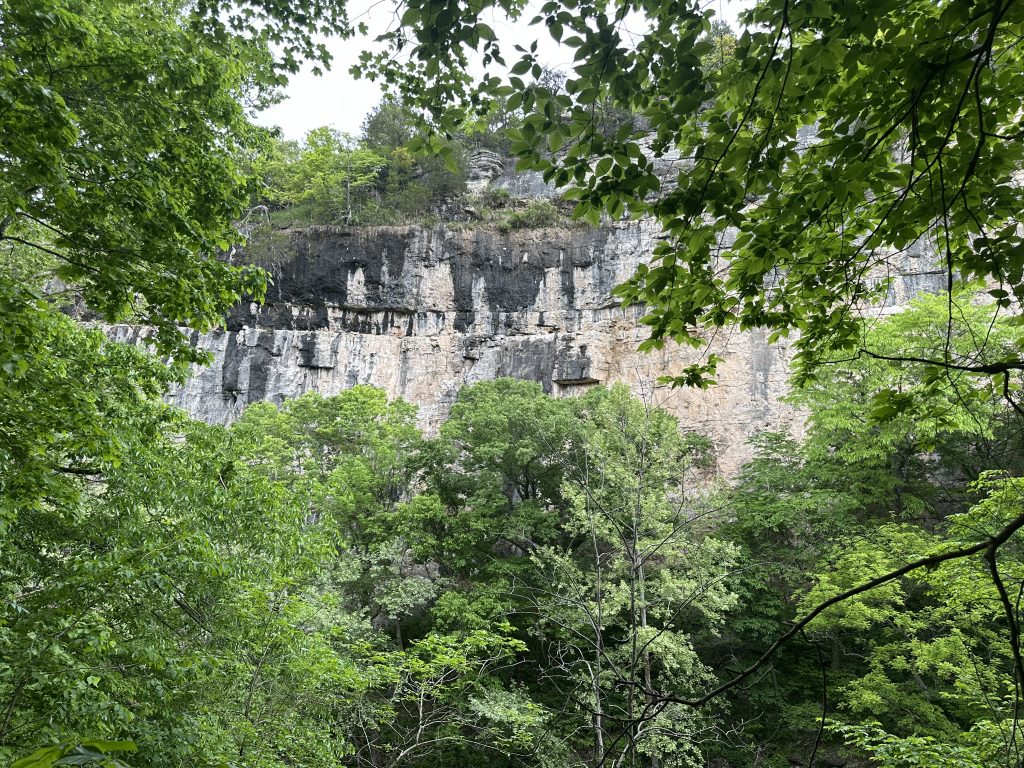
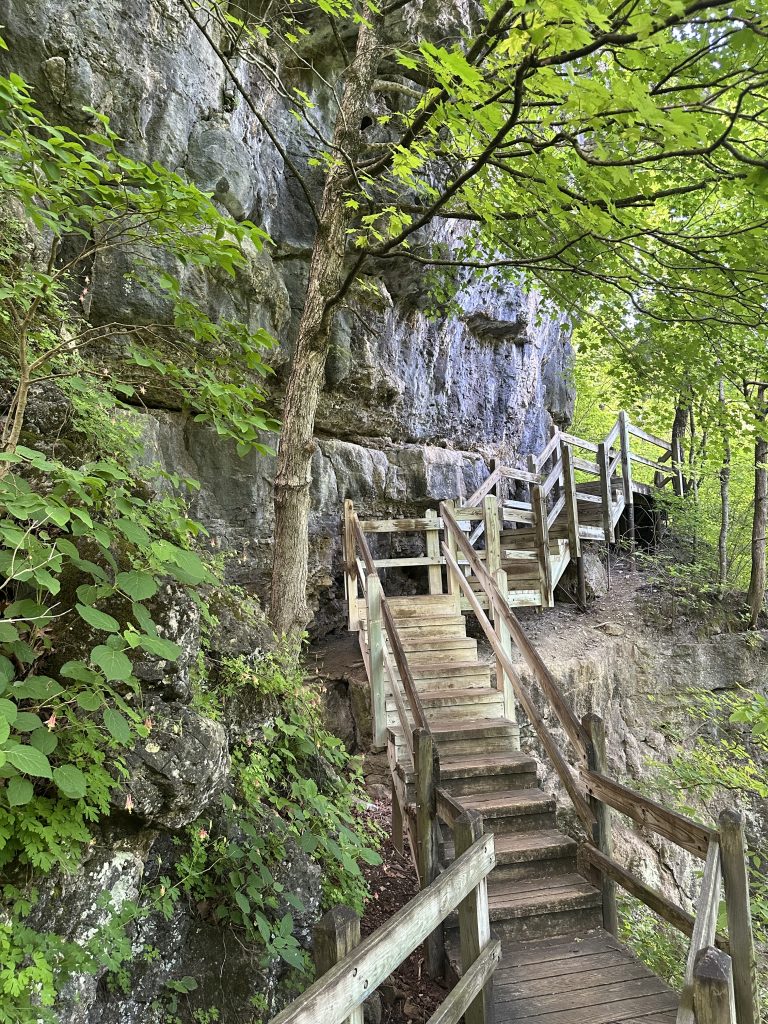
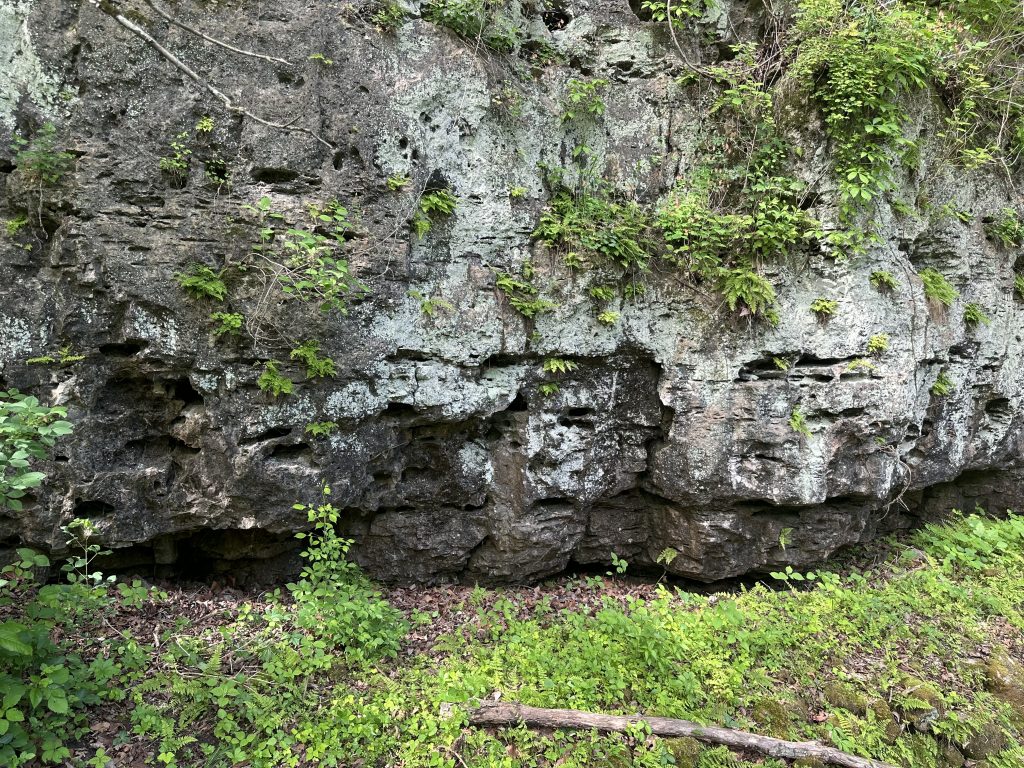
The Trails of Ha Ha Tonka: Scenic Walks & Rugged Adventures
Easy Trails: Short, Scenic & Accessible Paths
- Oak Woodland Trail (0.10 miles) → Paved, with interpretive signs on local flora.
- Cedar Trail (0.20 miles) → A brief woodland path showcasing Missouri’s native landscape.
- Castle Trail (0.40 miles) → Leads directly to the castle ruins, stroller-friendly.
Moderate Trails: Varied Terrain & Changing Scenery
- Dell Rim Trail (0.30 miles) → Scenic route near Whispering Dell Sinkhole.
- Acorn Trail (0.90 miles) → A self-guided nature trail, highlighting glades and oak woodlands maintained by prescribed fires.
- Spring Trail (1.40 miles) → A mix of paved, boardwalk, and rugged terrain, leading to Ha Ha Tonka Spring.
- Boulder Ridge Trail (1.60 miles) → Woodland scenery with rocky terrain.
- Quarry Trail (1.75 miles) → Passes historic quarry sites where stone was mined for the castle.
Rugged Trails: Steep Grades & Longer Distances
- Lake Trail (0.40 miles) → Climbs 250 feet from the lake to Castle & Quarry Trails.
- Island Trail (0.50 miles) → Passes Balanced Rock and Island Cave.
- Colosseum Trail (0.60 miles) → Winds under the Natural Bridge, through a sinkhole, and past huge fallen boulders.
- Devil’s Kitchen Trail (1.40 miles) → Travels through sinkholes and steep bluffs.
- Turkey Pen Hollow Trail (6.80 miles) → The longest and most remote trail, perfect for backpacking.
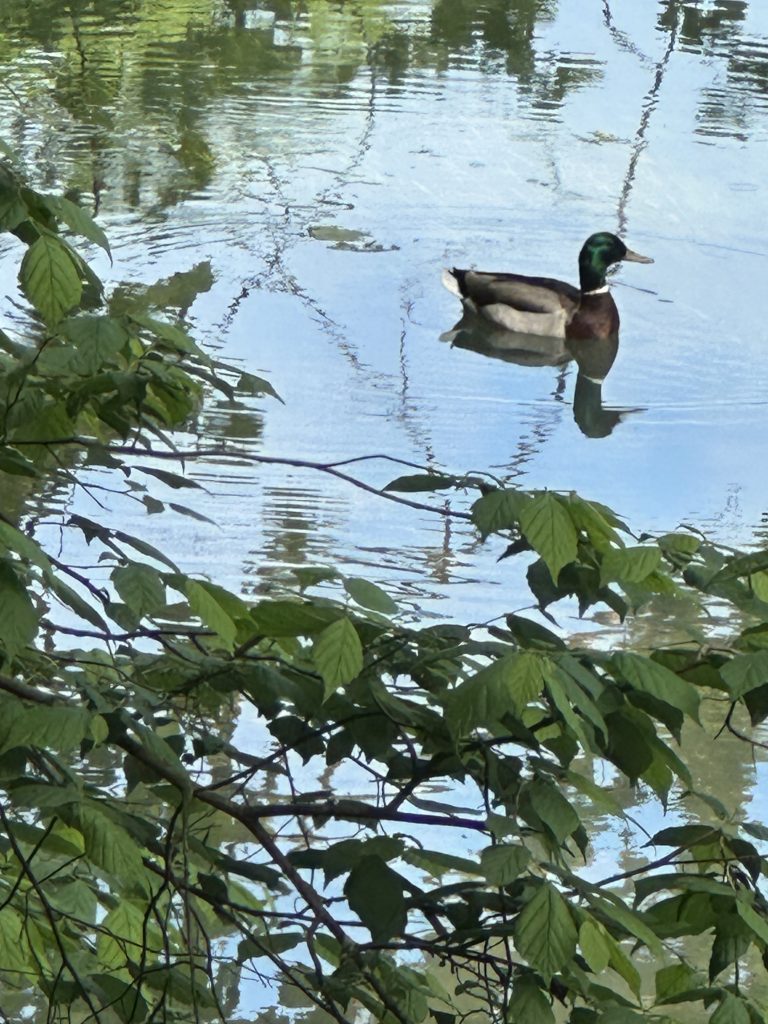

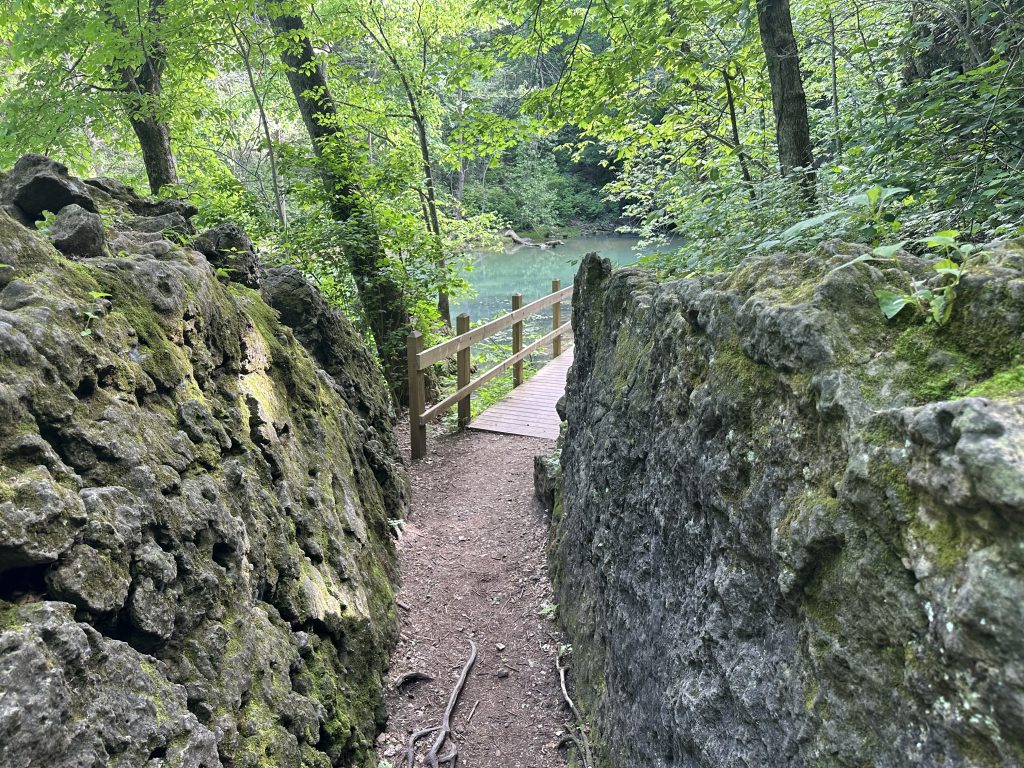
Amenities & Visitor Experience: Comfort in Missouri’s Wild Beauty
Essential Amenities: Making the Most of Your Visit
- Picnic Areas → Scenic spots with tables, ideal for outdoor meals.
- Restrooms → Available throughout the park.
- Interpretive Shelters → Displays highlighting Ha Ha Tonka’s history and geology.
- Scenic Overlooks → Stunning views of the castle ruins, bluffs, and Ha Ha Tonka Spring.
Activities: Adventure Meets Relaxation
- Hiking, Boating & Kayaking → Explore trails or paddle the Big Niangua River.
- Fishing → Cast a line at Ha Ha Tonka Spring or Lake of the Ozarks.
- Camping & Wildlife Viewing → Stay overnight and spot native Missouri wildlife.
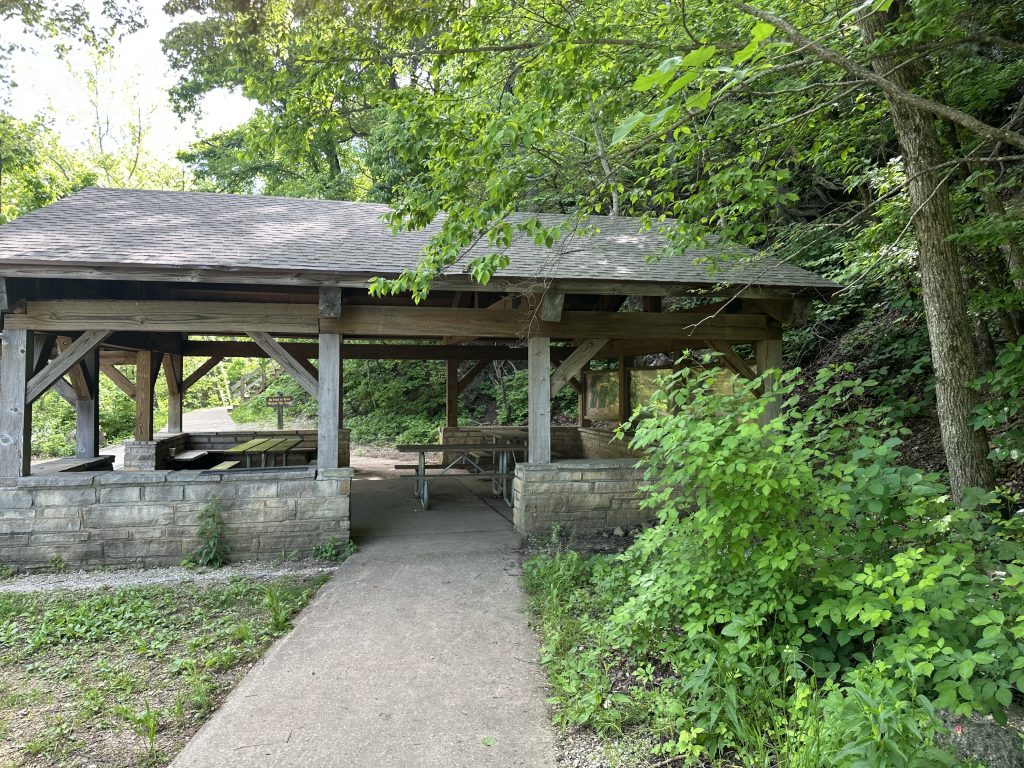

Ha Ha Tonka: Where Mystery, Beauty, and Exploration Meet
Ha Ha Tonka is more than just a destination—it’s an experience shaped by time, ambition, and nature’s quiet dominance.
To stand beneath its Natural Bridge, walk among its ruins, or paddle its underground-fed waters is to witness something both timeless and ever-changing. This place carries the weight of history, the power of geology, and the unmistakable energy of stories waiting to be uncovered.
It’s a land of lost dreams and living landscapes, where every trail offers a new perspective, and every visitor leaves with something unforgettable. Here, past and present blend into something greater, creating a destination where history lingers, nature thrives, and adventure calls.
Ha Ha Tonka isn’t just a destination—it’s a piece of Missouri’s untamed heart.
Ready to experience Missouri’s untamed beauty for yourself?
Plan your visit, explore its secrets, and let Ha Ha Tonka tell you its story.
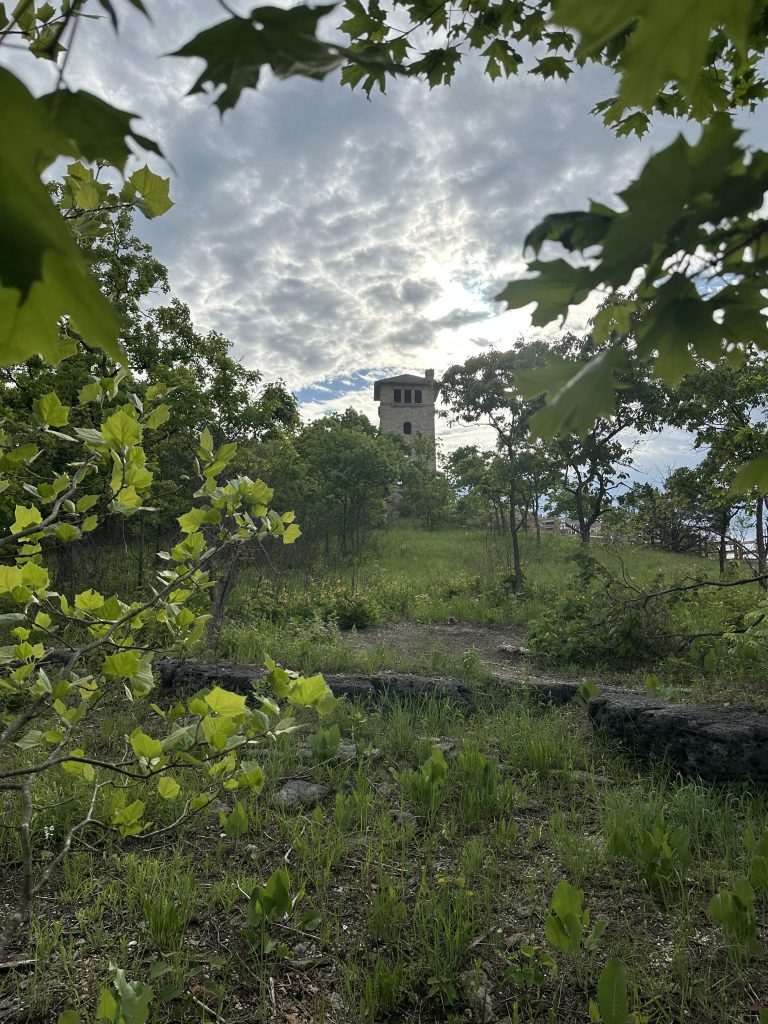
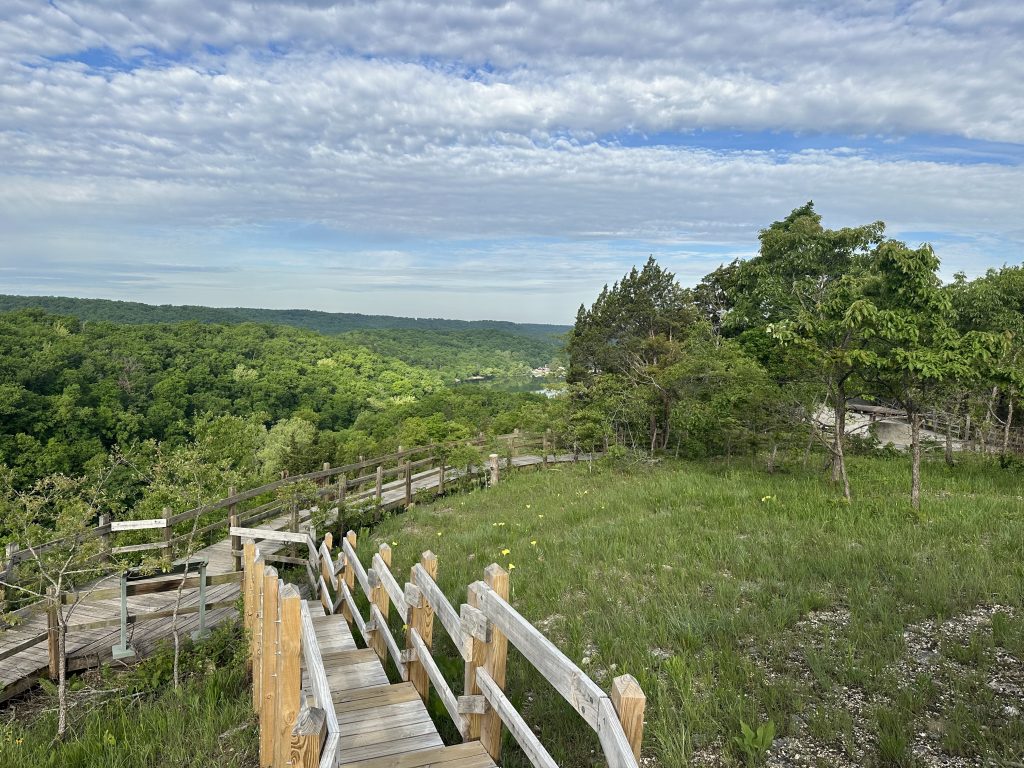
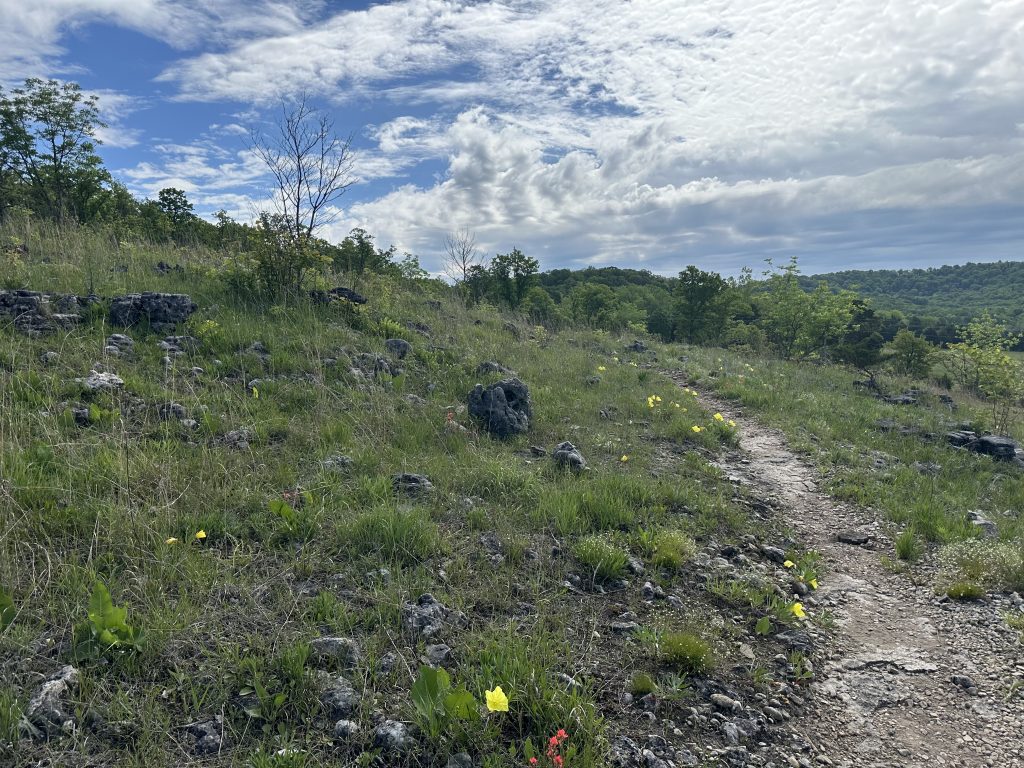
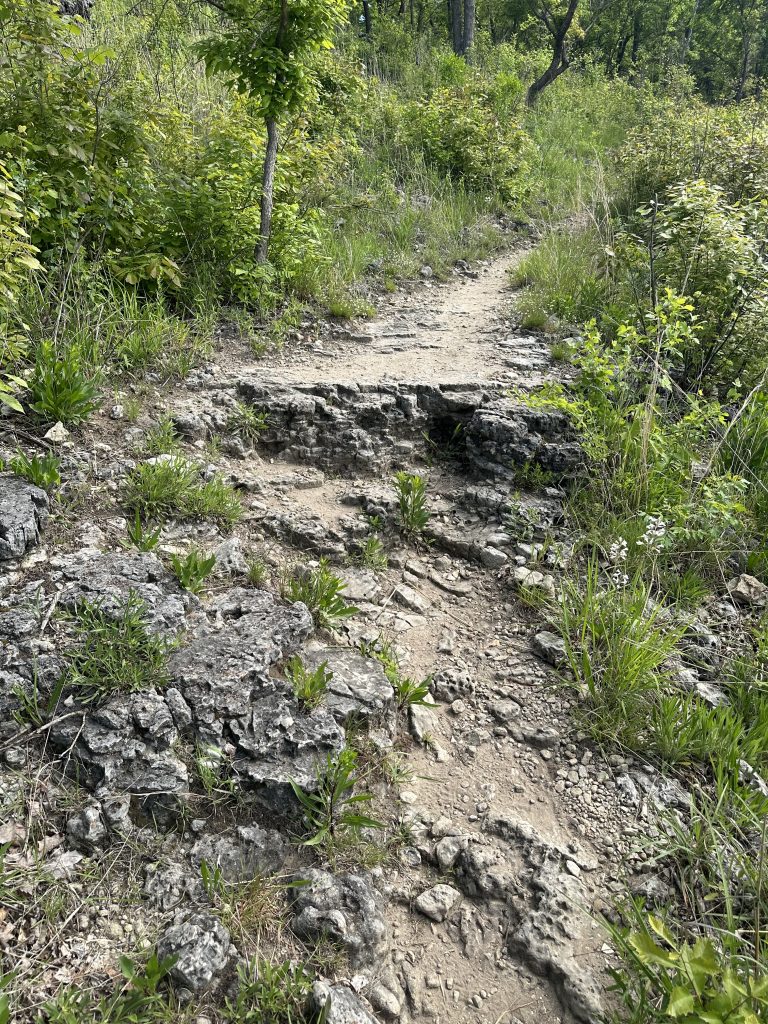


Leave a Reply